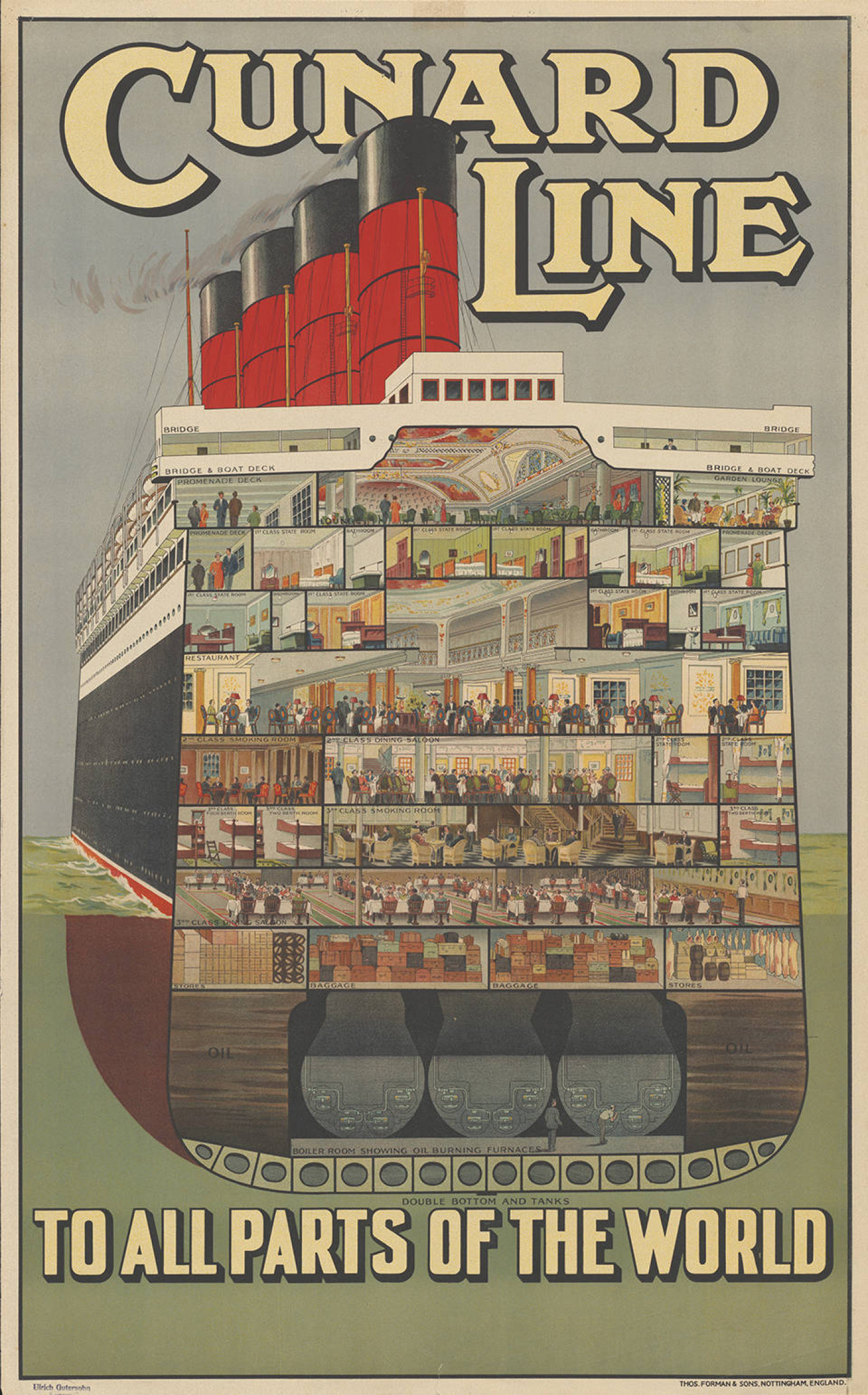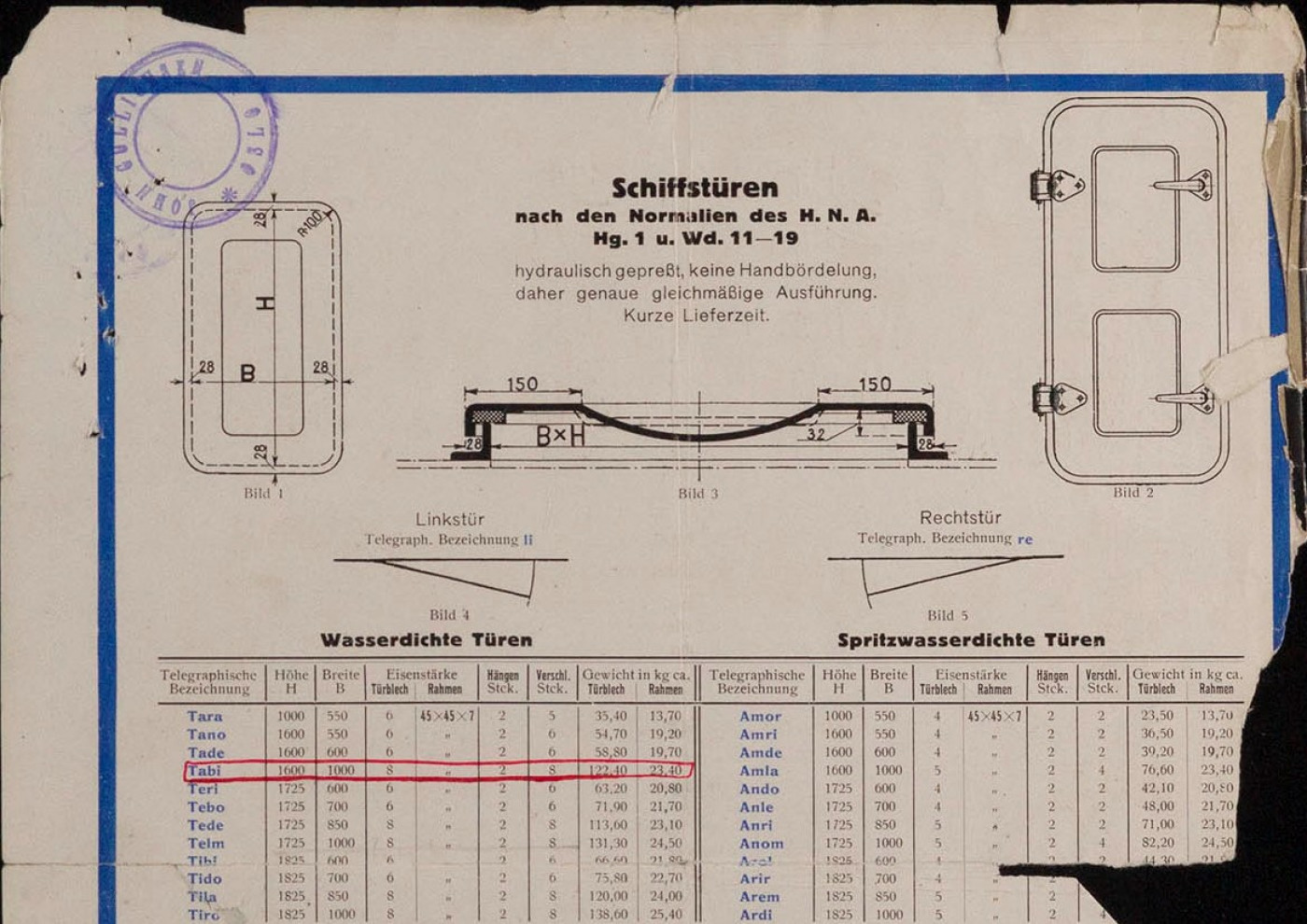Wednesday, April 28 2021
In my previous two blogs on cataloguing foreign language material I discussed the most challenging item and my favourite item that I’ve catalogued so far. For my third blog on foreign language cataloguing, I wanted to share the most unusual item that I’ve catalogued during my quest to translate and shed light on Lloyd’s Register’s vast collection of German language material.

At first glance, the item LRF-PUN-W107-0147-O (that’s its unique reference code) could easily be mistaken for a travel poster from the early 1900s, selling the idea of travelling in style by boat. During this period, ocean travel was à la mode for upper and middle class holiday makers (read more about 20th century travel here) and, at a time when photography was in its infancy, these luxurious cruises were advertised using striking printed posters such as these:

Colour lithograph poster of Empress Britain by J.R. Tooby, 1931. © Victoria and Albert Museum

Cunard Line – to all parts of the world, poster by Ulrich Gutersohn, circa 1920. © Victoria and Albert Museum
However, if you understand German you might be confused to see that, far from advertising a passenger liner, this pamphlet is in fact advertising ship building supplies- more specifically hydraulically pressed ship doors. The information overleaf goes into more depth about said doors, providing technical information accompanied by a handy table comparing their water-tight and splash-proof doors.
The vessel depicted on the poster is believed to be N T Nielsen Alonso (previously named Custodian) since this pamphlet was found filed with documents relating to this vessel. N T Nielsen Alsonso was a steamer built in 1900 by Charles Connell & Company in Glasgow, operating as a cargo vessel for a variety of owners until she was sunk in 1943 during WWII. However, despite being stored with documents relating to N T Nielsen Alonso, there is no guarantee that she is the vessel featured on the poster or that she was even fitted with these specially engineered, pressed doors. As we discovered with the case of the mysterious cycling shoe pamphlet, it isn’t uncommon to find unrelated objects tucked into a pile of documents relating to a vessel. Although this undated, potentially unrelated document, could be seen as a bit of a nuisance to an archivist, I personally enjoy the sense of mystery and the potential for a story yet to be uncovered provided by these oddities. Personally, I like to think that this pamphlet relates to N T Nielsen Alsonso because the company who owned her was interested in installing the “Tabi” doors, which we can see has been circled in red:

Overall, despite the lack of glamour surrounding hydraulically pressed ship doors compared to a getaway cruise, I enjoyed the fact that Berlin-based DMW Schwarze (a door supply company which still exists to this day, now based in Bielefeld) decided to employ the same tactics that travel companies were using in the early 20th century to catch their potential customers’ attention- although prospective holidaymakers who caught sight of this pamphlet may have been disappointed to discover what it was advertising!

